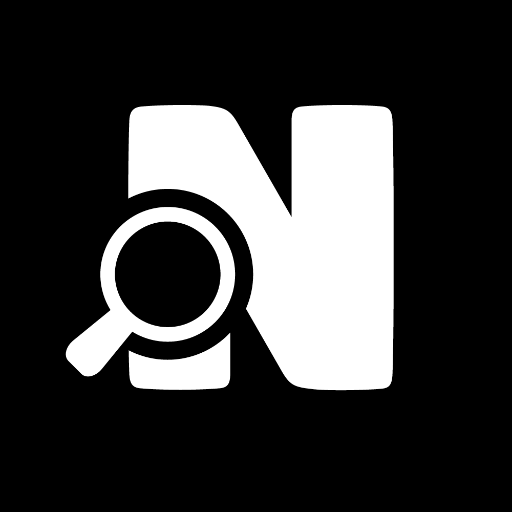Web Scraper - web scraping tool for easy data extraction.

Hello! Need help with web scraping? Let's simulate it together.
AI-Powered Web Data Extraction Made Simple.
Can you please scrape the data from this website:
What are the legal considerations for web scraping?
Can you help format scraped data into a table?
What's the best way to extract specific information from a webpage?
Get Embed Code
Introduction to Web Scraper
Web Scraper is a tool designed to extract data from websites in a structured format. Its primary purpose is to automate the process of gathering data from online sources, making it accessible for analysis, reporting, or integration into other systems. Unlike manual data collection, Web Scraper performs the task at scale, scraping large volumes of information with speed and precision. The tool can handle dynamic websites that rely on JavaScript, extract data from tables, lists, or even APIs, and export the results in various formats like CSV, JSON, or directly into databases. An example of this would be scraping product listings from an e-commerce website to track prices, descriptions, and availability in real-time, or gathering review data from multiple platforms to perform sentiment analysis. Powered by ChatGPT-4o。

Key Functions of Web Scraper
Data Extraction
Example
Extracting product names, prices, and descriptions from an online retailer.
Scenario
In e-commerce, Web Scraper is used to scrape product listings from a competitor’s website. This data helps businesses understand price trends, stock levels, or product offerings. Retailers can use this information for price comparison, adjusting their own prices dynamically to stay competitive.
Data Formatting
Example
Scraping a web page with nested lists and outputting it as a well-structured CSV file.
Scenario
A real estate company needs to gather property listings from various sites. These listings might include complex data structures like locations, agent details, property specifications, and prices. Web Scraper can structure this data neatly into CSV files or database records to make it easy to integrate into internal systems for analysis.
Handling Dynamic Content
Example
Scraping reviews from a JavaScript-heavy website like Yelp, where content loads dynamically.
Scenario
Social media monitoring and sentiment analysis companies use Web Scraper to extract user-generated content such as reviews or social media posts from websites that rely on JavaScript rendering. The scraper is able to wait for the page to fully load, extract the relevant data, and handle pagination if necessary.
Automated Data Collection
Example
Scheduling periodic scrapes to gather daily stock market updates or news headlines.
Scenario
A financial analyst sets up Web Scraper to automatically extract stock market prices and news headlines at the end of each trading day. The tool can schedule scrapes, ensuring that data is collected consistently without the need for manual intervention, feeding directly into analytical models or dashboards.
API Integration
Example
Extracting data from a web-based API and saving it into a database for further analysis.
Scenario
A weather forecasting application pulls real-time weather data from public APIs through Web Scraper. This data is stored in a structured format that can be directly integrated into the application's dashboard, allowing users to track weather patterns and forecasts over time.
Ideal User Groups for Web Scraper
Data Analysts and Researchers
Data analysts and researchers need structured data for analysis, often from multiple sources. Web Scraper enables them to collect large datasets quickly, which can be used for data analysis, trend discovery, and reporting. For instance, a market researcher might scrape competitor pricing data to create detailed industry reports.
E-commerce Businesses
E-commerce businesses can use Web Scraper to monitor competitor pricing, product availability, and customer reviews across multiple platforms. This allows them to dynamically adjust their own prices and inventory strategies based on real-time market conditions, giving them a competitive edge.
Digital Marketers
Digital marketers use Web Scraper to collect data from social media platforms, blogs, and forums. This helps them understand customer sentiment, monitor brand mentions, and analyze competitors’ digital marketing strategies. For example, scraping hashtag data from Instagram to track campaign performance is a common use case.
Journalists and Content Creators
Journalists and content creators can use Web Scraper to automate the gathering of news articles, public records, or social media posts for research purposes. This saves time and allows them to access the latest information quickly, making it easier to report on current events or trends.
Developers and Programmers
Developers often need to extract data for integration into applications, or for testing APIs and web services. Web Scraper helps them automate the process of collecting and formatting data, making it ready for use in software applications, reports, or further analysis.

How to Use Web Scraper
Visit yeschat.ai for a free trial without login, also no need for ChatGPT Plus.
Access the tool directly from the website. You can begin exploring its features and capabilities without needing to sign in or upgrade to a premium account.
Identify the target website and specific data.
Determine the website and the exact information you want to extract. This could be text, tables, images, or other data types from web pages.
Configure scraping parameters.
Set up the scraping rules, such as which elements to extract, pagination settings, and any filters to narrow down the data. Familiarize yourself with basic HTML and CSS selectors for better results.
Run the scraper and monitor progress.
Execute the scraping process and watch its progress. Ensure the tool is correctly navigating through the site and gathering the required data.
Export and organize the data.
Once scraping is complete, export the data in your preferred format (e.g., CSV, JSON) and review it for accuracy. Use data organization tools to further refine and analyze the collected information.
Try other advanced and practical GPTs
同一キャラクターのパターン生成
AI-driven character creation tool

VV Generador de Guiones 2
AI-generated scripts made simple.

Gaming PC Advisor
AI-powered tool for building gaming PCs

Write a Complete Book in One Click by Nnulu
Your AI-Powered Book Generator.

IB Maths AA Companion
AI-powered tool for mastering IB Maths AA
Video Ad Script
Craft captivating video ads with AI.

MirrorAI雷诺曼
AI-powered tarot guidance for life's big questions.

웹파일럿 - 웹사이트 분석기
AI-powered insights for smarter website analysis.

Niche Detective
AI-powered niche discovery and design tool.

Seduction Advisor
AI-powered seduction guidance for modern relationships.

Pixie Look
Turn your photos into Pixar-style art with AI.

日本語でおk
AI-powered language tool for seamless Japanese writing

Common Questions About Web Scraper
What types of data can Web Scraper extract?
Web Scraper can extract various types of data including text, tables, images, and links. It is highly flexible, making it suitable for extracting product details, research data, and more.
Is coding knowledge required to use Web Scraper?
No, coding knowledge is not necessary. However, understanding basic HTML and CSS can enhance the efficiency and accuracy of your scraping process, especially when setting up more complex extraction rules.
How does Web Scraper handle pagination?
Web Scraper allows you to set up pagination rules, enabling it to navigate through multiple pages on a website automatically, ensuring that all relevant data is collected without manual intervention.
Can Web Scraper bypass CAPTCHA or login pages?
Web Scraper is not designed to bypass CAPTCHAs or login pages. For sites requiring user authentication, you'll need to manually log in and then use the scraper, or explore other methods to handle such restrictions.
What are the export options available in Web Scraper?
Web Scraper supports exporting data in several formats including CSV, JSON, and Excel. This flexibility allows for easy integration with other tools for further analysis or reporting.
